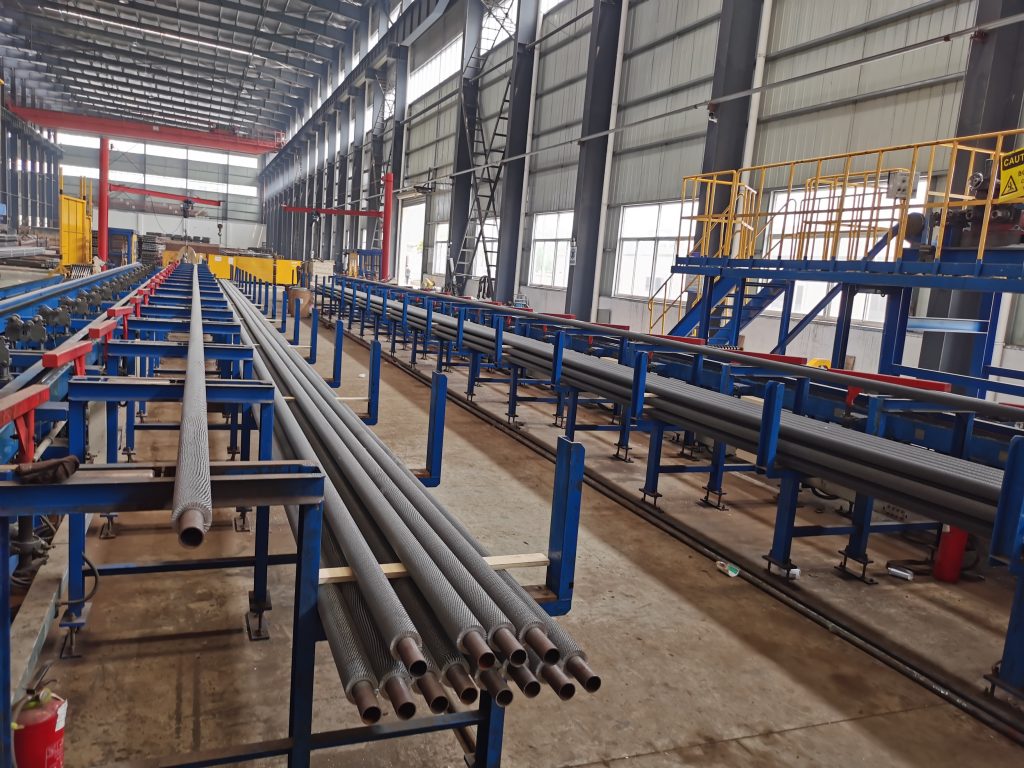A Complete Overview Of The Several Types Of Finned Tubes
Posted on June 25, 2020 at 02:20 PM

Finned tubes are heat exchangers that chill or heat liquids such as water and oil using air. Diesel charge air coolers, oil coolers, hydrogen coolers, waste heat recovery, driers, air conditioning, air heaters, generator coolers, and steam condensers all employ mechanical tubes.
Heat exchanger tubes are available in a variety of heights, shapes, and materials. Here's a rundown of the many types of finned tubes to help you decide which one to use for various applications:
-High helical fins
Helical high finned tubes come in five different variants and are used to repair air-cooled heat exchangers
-‘L’ finned tubes
One of the most frequent forms of finned tubes is the ‘L' fin. It relies on the fin and tube having the most surface contact possible.
‘L' fin tubes are made of ductile metals like aluminium and copper, and can resist temperatures of up to 170°C, as well as compression and stretching during installation.
-Finned tubes with the letter ‘LL'
Finned tubes with the letter ‘LL' feature overlapping feet that surround the tube's base. The overlapping fin minimises movement and separation, as well as corrosion, throughout the tube. LL fins are a great alternative to costly extruded fins in corrosive conditions.
-Finned tubes with the initials ‘KL'
Fins on ‘KL' finned tubes are produced from a strip of metal that is cut into an L-shaped foot with precision. The fin is then rolled and fastened at both ends into the pre-knurled tube.
The ‘KL' finned tube has a strong connection that improves heat transmission and can tolerate temperatures of up to 250°C.
-‘G’ embedded finned tubes
An integrated heat exchanger tube is built to withstand high temperatures and is suited for situations where the fin side will be cleaned on a regular basis. For improved conductivity, certain ‘G' inserted finned tubes include carbon steel fins and can resist temperatures up to 400°C.
-Extruded finned tubes
Extruded finned tubes are ideal for high-temperature applications and corrosive environments. Heat pipes, dry air coolers, air to air heat exchangers (HVAC), air dehumidification, energy recovery, and offshore and remote applications all employ extruded tubes.
-HF welded fins
Helical finned tubes with high frequency welding are excellent for a variety of industrial applications, including petrochemical and power production. The helical fin is connected to the base by electric resistance welding in this form of heat exchanger tube, providing a homogenous, clean connection for effective heat flow and corrosion resistance.
Common uses of HF welded fins include:
-Integral fins
Integrally finned tubes are a great alternative for increasing heat transmission between fluids while reducing physical size and expense to a minimum. The fin is integrated with the tube and is rolled out from the tube wall, lowering the thickness of the wall under the finned portion, as the name implies.
Integrally finned tubes are available in:
-Longitudinal fins
Resistance-welded in diametrically opposed pairs, the fins for longitudinal finned tubes are very efficient. The base is formed from a u-channel and is pressure rolled and spot welded to the tube, with fins in multiples of four.
Heat exchangers, fire-rated heaters, gas coolers, and tank heaters are just a few of the uses for a longitudinal finned tube. It's usually made of weldable or brazable materials and comes in u-bent or straight lengths.
-Finned Elfin Tubes
Elfin finned tubes have found a home in hydropower generating coolers and are widely used. They're usually utilised to keep the generators at these stations cold. The fin strip on the outside edge of an Elfin tube is mechanically pushed to ensure that the fin adheres to the heat exchanger tube.
-Bulleted fins
Bulleted fins, which are similar to Elfin tubes, have grown in popularity as a quick and inexpensive way to connect strip fins to tubes. They're made by physically putting fins atop tubes and manually pushing and withdrawing a bullet through the tube to stretch the tube wall out into the fins.
-Wire finned tubes
Because it generates turbulence in the fluid running over it, the wire loop tube provides efficient heat transmission. The surface area of these tubes is increased by an extended wire loop. The loops are spirally coiled onto the top of the tube wall and secured at the loop's base using a binding wire. Temperatures of up to 250 degrees Celsius may be tolerated by these tubes.